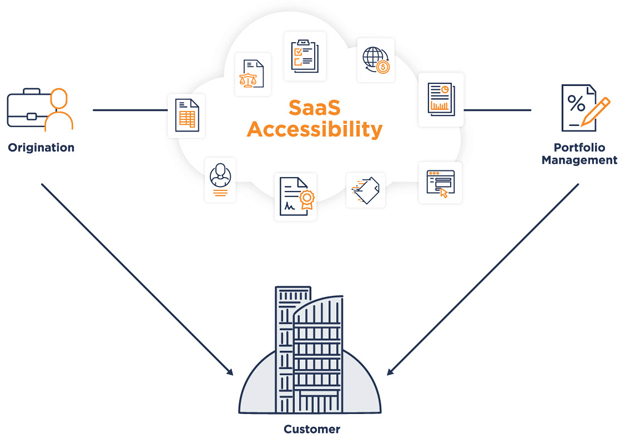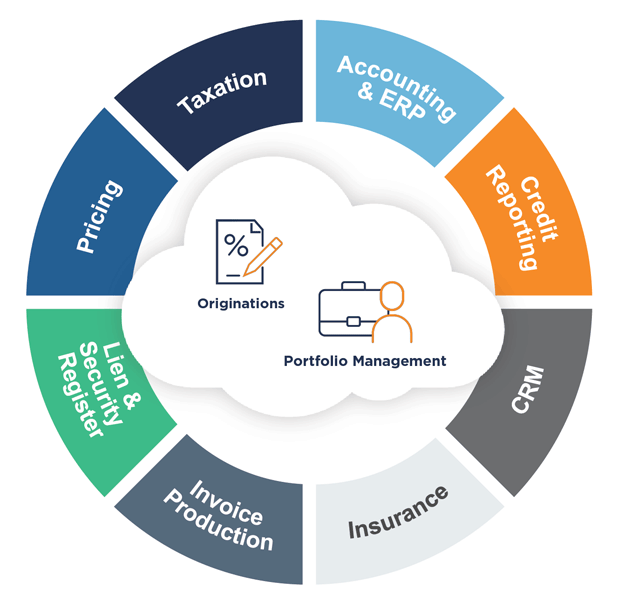
As equipment finance professionals, you are in a constant cycle of obtaining new business to replace contracts that are coming to end of term. While these cycles are a part of the daily operations associated with the equipment finance business, there are tools that can be employed to make the process more efficient and help you to accelerate growth. It has been our experience that firms focusing on innovation, both in their financial products and in embracing technology to help support these solutions, are the ones that see the most sustained long-term growth.
In planning for 2020, have you been thinking about how to boost your business? Are you considering investing in tools that can help your business grow or are you looking to add additional asset classes to your portfolio? Are you searching for ways to increase efficiency and reduce costs associated with origination and portfolio management throughout the lifecycle of a contract? These are just a few of the questions that we hear on a daily basis as equipment finance firms look for a competitive edge. This is really at the heart of why technology providers exist and thrive within our industry. The market and leasing firms alike are pushing to maximize returns making technology decisions critical for growth. But unlike in the early days when software solutions were generic and required significant customization, the rise of specialty equipment finance software coupled with cloud-based delivery makes these solutions more accessible than ever before.

Software Technology Is Changing the Game
This statement may seem a bit obvious, but even the word software is becoming dated. Software refers to a product, a collection of code designed to deliver value to the user. The challenge with this term is that we think of this as one software application designed to address one business concern when, in reality, what we are looking for is technology that provides added value for your business and your customers. The rules of the game are changing, and I would argue they are changing for the better. The technology you select to support your business should do exactly that … support and help grow your business today and in the future. This means technology providers need to understand your business and provide best practice knowledge on how to best use the technology to achieve your overall business goals.
When implemented in line with your business processes, technology can provide significant benefits and competitive advantage. For example, if you have manual steps in your contract origination process that can be automated, both your cost of origination and speed to decision can be improved. Similarly, ensuring integration between your front-end origination system and your back-office portfolio management solution connected to your general ledger is critical for both efficiency of data movement and accuracy of data entry. In these examples, speed, accuracy and efficiency become the key differentiators in a competitive market.

As you evaluate which technologies are right for your business, it is good to stop and think through your overall business process or partner with a vendor who can help with this analysis. This will help you identify which aspects of your process could benefit from automation/integration into your base technology platform. This will also help identify areas of potential efficiency gains where you can have greater control over your operational costs.

The Platform Lives in an Ecosystem
No two business operations are the same. While there are many similarities within equipment finance firms, each business will approach the market with a different focus and process by which it addresses the needs of its customers. It is the unique aspect of each business that requires a technology solution to be flexible enough to embrace theses differences. This flexibility starts with the realization that no technology lives on its own. There are data inputs coming from a variety of sources both during the origination process and throughout the life of the contract. These include simple items such as credit score to more complex inputs such as asset usage for metered billing. Bringing all of these data inputs into a technology platform is part of the unique nature of each business and requires a technology platform to provide connectivity into the ecosystem of technologies that make up your business operation.
Integration can be an overused term and has a broad spectrum of definitions. For the purpose of this article, I would like to focus on web-based integrations. To get the best benefit from an integration, it is important to make sure the connection between the technology solutions is one that leverages modern software design principles. Technology platform providers should be leveraging web services to connect solutions together. This means that the two technologies have provided connection hooks that allows them to connect and exchange appropriate data needed to support your overall business process.
It is also important that your technology solution anticipates the future needs of your business. While none of us can see into the future, there are some constants that we can expect. It is a given that accounting laws will change, regulations will be imposed and technology will advance. Change will happen, but will your technology platform be able to adapt to the changes? If a technology solution is built to live in an ecosystem, then the flexibility required to provide an integrated solution will be the ability to effectively handle the speed and complexity of market and regulatory changes.
How to Plan for a New Platform?
Implementing a technology platform can provide a boost to your business, but there are some things you should consider as you head down this path.
- Understand data migration – one of the most important aspects of implementing a technology platform is the migration of your contract and customer data. It is important to understand if the technology provider has experience with migrating data similar to yours. In many cases, the vendor will ask you to migrate your own data or will only do balance forward from the time the platform is live. If you are looking for full migration, including historical data, ask if your vendor has the ability to do this and has done it for other equipment financing firms.
- Get the right stakeholders involved – Technology decisions need to involve more than the technical staff. This is a business decision and the technology platform needs to align with each aspect of your process or reduce steps which will improve the efficiency in your operation. Take a moment to understand which functions within your organization will be impacted. Gather their thoughts on how the technology platform should help their business and work through these with your technology vendor. The technology vendor should provide best practice guidance ensuring the needs of the business are optimally met.
- Decide how you want to consume the solution – The majority of our technical interactions are now cloud-based. The need to purchase and maintain IT infrastructure to support a technology platform are no longer a requirement. This means the computing resources required to power your operation are now in the cloud. There are several varieties of cloud computing. If you are looking to have the IT and application management taken care of by the technology provider, look for a full software as a service (SaaS) solution.
- Have a clear timeline for deployment – There is an unfortunate reality in our industry … the perception that implementing a technology platform can take a long time and is very expensive. While this may have been true at one point, with the introduction of cloud-based technologies, we have seen implementation in as little as 12 weeks, including data migration.
Technology platforms specifically designed to support the needs of the equipment financing market have created a lot of value for those who have implemented them. As you look to 2020, is it time to explore if this type of solution is right for you?